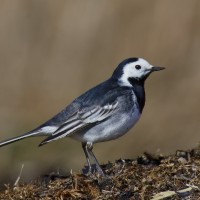Beschreibung
In Cabo Torres, seven kilometres from the centre of Gijón, you’ll find the Campa Torres Archaeological-Natural Park. Campa Torres is a good place to see Krähenscharbe, Wanderfalke, the passage of seabirds like Basstölpel, and from a distance some birds settled in the enclosed outer zone of the port.
_________________________
Espagnol: Paseo por yacimiento de los antiguos pobladores astures de Gijon, hasta llegar al faro. Visual del mar Cantábrico y un acantilado donde crían varias aves. Buen sitio para poder ver a los cormoranes moñudos andando, la zona de campeo del halcón peregrino, el paso de aves marinas, y desde la distancia algunas aves sedimentadas en la zona exterior acotada del puerto de Musel.
Details
Zugang
You leave the car in the parking lot of the archaeological site, and then walk approx. 1 km up to the lighthouse area.
_________________________
Espagnol: Se debe dejar el coche en el parking del yacimiento arqueológico, y posteriormente acceder andando 1 km aprox. Hasta la zona del faro.
Terrain und Habitat
Moor/Heideland , Meer , Vereinzelte Bäume und BüscheBedingungen
FlachRundweg
NeinIst ein Spektiv nützlich?
JaGute Beobachtungszeit
GanzjährigBeste Beobachtungszeit
Frühjahrszug , HerbstzugRoute
asphaltierte StraßeSchwierigkeitsgrad der Tour
EinfachErreichbarkeit
zu Fuß , FahrradBeobachtungshütten oder -türme
JaZusätzliche Informationen
It is important to find out about the opening hours of access to the Torres lighthouse. See the link below.
_________________________
Espagnol: Es importante informarse de los horarios de apertura del acceso al faro de Torres.





